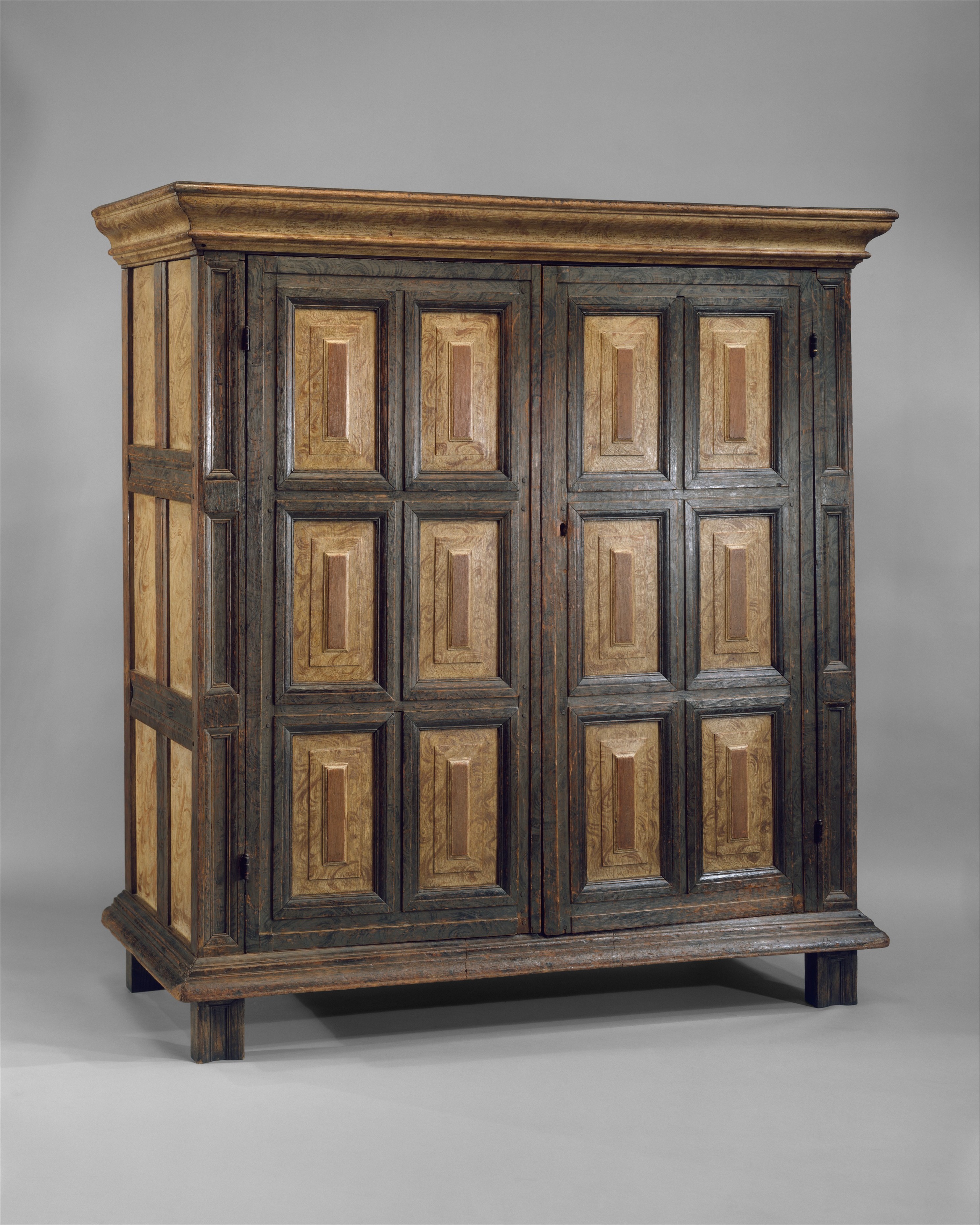
17th Century Kast (wardrobe or cupboard) 19820.57 Cleveland Museum of Art, wikimedia commons
"After the founding of the Dutch East India Company in 1602, the use of exotic, imported wood veneers in furniture became more prevalent. So too did the use of perspective and mathematical systems in laying out the veneers. The combination produced a style of decoration that spread across Europe and even to the young colonies in America."
Date: c. 1625-50
This Kast is Oak with ebony and rosewood veneers
Dimensions Overall: 244.5 x 224.3 x 85.2 cm (96 1/4 x 88 5/16 x 33 9/16 in.)
A kast (plural 'kasten') was often part of a woman's dowry, meant to hold the very valuable items of a Dutch household. It might contain textiles like linen sheets, lace, and finer fabric items for creating decor in the house. In wealthier households it might also contain silver utensils or ewers. The woman of the house generally wore the key to the kast and would unlock when items were to be removed or placed inside. Textiles were so valuable that some historians have calculated a single linen sheet could be the equivalent of a year of wages to a maid.
Kasts were often built using a variety of different woods, some of which came in to New Netherland through the DWIC trading vessels. Ebony from Africa might be used along with White Oak or Black Walnut from New Netherland or walnut from the Netherlands and rosewood from South America. Boards and lengths of timber and precious woods were often part of the cargo of ships.
Kasten were large, impressive pieces that had a practical use, but also announced the status of the family. They could be assembled in the house, and then taken apart and reassembled if the family moved. In the case of the Kierstede family, this may have been the case, as they lived near Rennsalearswyck and later in New Amsterdam.

Kast made in NY-NJ 1650-1700 Met Museum Public Domain https://www.metmuseum.org/art/collection/search/4593

